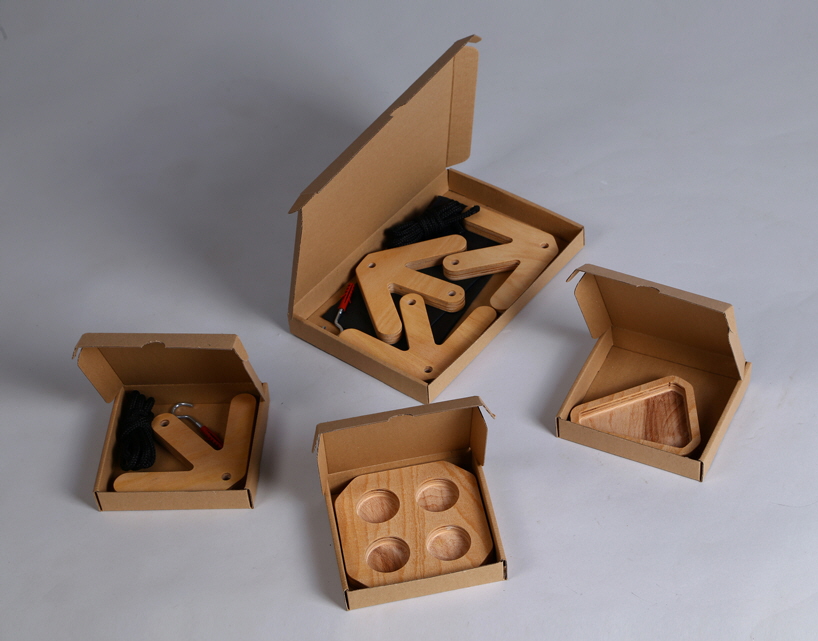
Electron Chair: A Waste-Free Flat Pack Furniture Solution
Electron Chair by LOCK is a new concept in flat-pack furniture. The chair combines art design, ergonomics, innovative engineering and puzzle structure. The Electron Chair is not just a typical chair, but a functional sculpture.
Design Team
Konstantin Achkov designer
Deyan Georgiev co founder
The first prototype of the chair was designed several years ago and was well received; this made the designer strive to further upgrade the idea of the chair. After creating several different prototypes he reached a better assembly, a more clear vision and innovative back that easily transforms a stool into a chair. The chair also comes in an even more compact flat-pack.
Each part of the chair is made of one sheet 18mm beech plywood cut precisely by a CNC router. The joints of the chair are an original design that provide strength and space reduction. They allow extremely user-friendly assembly and confidently hold the elements of the chair together. All the elements are assembled on the puzzle principle without the use of screws, nails, etc. All the wooden parts of the chair are finished with teak oil. The standard chair is offered with black, UV protected, coated textile.
The designer has developed a special set of accessories. Peanut trays, tea-light holders and coat hangers are all cut and created from the chair's waste material, while also helping to form the openings in the wooden elements— all of this results in a zero waste production process.
Designer Konstantin Achkov is a sculptor who worked for many years with complex structures like “tensegrity”. This is the one of the reasons that the Electron chair represents a mixture of art and innovative engineering.
-
oFavorite This
-
Q1Comment
K
{Welcome
Create a Core77 Account
Already have an account? Sign In
By creating a Core77 account you confirm that you accept the Terms of Use
K
Reset Password
Please enter your email and we will send an email to reset your password.











Comments
I wouldn't throw around the phrase waste-free so nonchalantly. It makes designers look a little out of touch.
Every step in the process of making this chair + other objects produced waste. The textile is coated, by what process? The plywood is glued, with glue squeezing out of the crack.
Even the last major process of cutting the plywood produces mountains of sawdust. Unless the designer found a use for the saw dust too, this has no business being called zero-waste.
Minimal waste doesn't grab enough attention though I suppose. I appreciate all the work that went in to the design, but the marketing should reflect the real value of all that work.